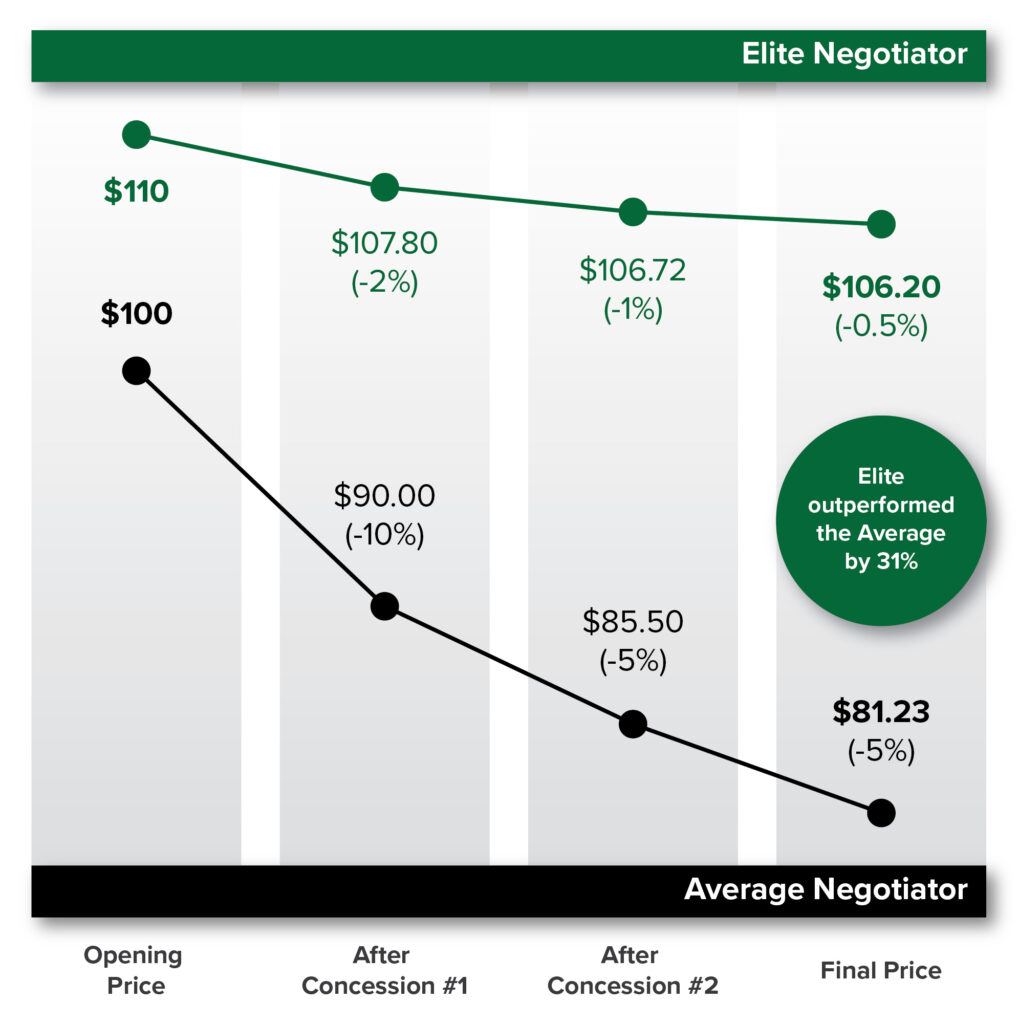The Art of the Deal: How Skilled Negotiation Boosts Profits

By David S. Bauders, CEO SPARXiQ

Inside the business of wholesale distribution, there is a constant but quiet battle for profits between buyers and sellers, playing out in thousands of small interactions each day. I’m talking about negotiating the terms of trade for a given sale. How much buyers pay sellers to get the products they need to do important work.
Today, smart sellers are focusing on how to get paid fairly for the value they bring to their buyers; others are passively accepting mediocre compensation for their work. The difference between these two mindsets is significant.
In this article, we’ll explore how the dynamics of negotiation impact distributor profits and how sellers can level the playing field through effective negotiation strategies.
Negotiated Pricing in Wholesale Distribution
Negotiated pricing is commonplace in most distribution verticals. Unlike consumer products, where pricing transparency and transaction costs support more standardized pricing, distributors’ orders vary greatly in product configurations, quantities, service models, etc. In addition, the economic importance of purchases — and ready comparability of sellers —to buyers supports spending more effort to drive negotiated terms.
In a thin-margin business like distribution, the outcomes of these negotiations determine economic viability and industry position. If buyers consistently haggle for an additional two percent better prices, an average distributor can lose half their profits. Conversely, if sellers can successfully negotiate and reduce haggling impact by two price percentage points, an average distributor can improve profits by 50 percent. And, as we have seen in the market over the past few years, “Six-Percenters” are known to acquire “Two-Percenters.”
The Imbalance: Skilled Buyers vs. Unskilled Sellers
Unfortunately, in this negotiated environment, there’s a major imbalance in the negotiation skill of buyers versus sellers. A very high percentage (up to 90 percent) of professional buyers have had professional training in the art, the strategy, and the tactics of negotiation. Sadly, less than 10 percent of sellers have similar formal skills training. The outcome: buyers routinely pickpocket the margins of their sellers.
With sellers often being commissioned on the sales or gross margin dollars, their strong perceived incentive is to maximize win rates and at the cost of margins. The unspoken mantra: It’s better to earn X% of something than X+2% of nothing. Between the training gap and the distorted incentives (and lack of metrics of success), it’s clear why buyers are often successful in their quest for lower prices.
Securing a Profitable Future through Effective Negotiation
Sellers professionally trained in negotiation will commonly achieve sell prices 10 percent or more better than average performers. Why is that? It’s actually not complicated; it turns out that these top performers employ two key tactics better than the norm:
- They Aim High: their entry price in negotiation is higher than where they need to land. They understand that negotiation will inevitably reduce realized pricing, so they develop appropriate targets (for example ten percent above their target final price) ahead of the negotiation. Average or poor negotiators leave no room for concessions, using their target ending prices as their starting prices.
- They are Stingy with Concessions: not only do top negotiators aim high, they also carefully manage the speed and magnitude of discounts. Instead of dropping prices in round numbers (think 10, 20, 30 percent), they make very small reductions (think one or two percent), thus signaling to their buyers that they have a limited ability to discount. Not surprisingly, their ending sell prices can easily outperform their peers by 20 percent or more.
Here is an example comparing the preserved margin between an average negotiator and a trained, elite negotiator.

The elite negotiator has not only exceeded their target final price ($106.22 vs. $100.00); they’ve also outperformed the average negotiator by 31 percent ($106.20 vs. $81.23). By aiming high and making smaller concessions, they preserved margin.
Measuring The Impact of Negotiation Training
So, can professional negotiation training for sellers tilt the balance back? The answer is yes. For over eight years, SPARXiQ has provided focused negotiation training for distribution sales teams. We’ve studied outcomes closely in transactional data and have consistently seen significant margin impacts resulting from training like this.
When we compare the pre- and post-training performance of sellers, several critical findings emerge. First, the frequency of pricing overrides falls significantly, by five to ten percent. Since overrides typically carry margins 1,000 basis points lower than system pricing, every five percent reduction in overrides is worth 50 basis points in addition profit margin. In addition, the margins earned by sellers when they override also increases, typically by 100 to 200 basis points. With many distributors suffering from override rates of 40 to 50 percent of revenues, that improvement translates to 40 to 100 basis points.
Equip Your Sellers to Negotiate Better
When we measure distributors’ actual Pricing Ratio of Attainment by seller (which we affectionately refer to as the “Caving Index”) and by buyer/customer (the “Haggling Index”), we commonly see deltas of 200 basis points per quintile in each dimension. When you work on this problem and improve each seller’s real-world performance by one quintile, you capture 200 basis points more profitability. If a seller has $500,000 in negotiated sales, that improvement translates to $10,000 of additional profit that drops through straight to the bottom line.
As long as negotiation continues to be a reality in distribution, mastering the dynamics of negotiation is critical to your success. The good news is, improving your sellers’ negotiation skills can unlock meaningful, sustainable profitability improvements while maintaining customer satisfaction.
The post The Art of the Deal: How Skilled Negotiation Boosts Profits appeared first on National Association of Wholesaler-Distributors.











